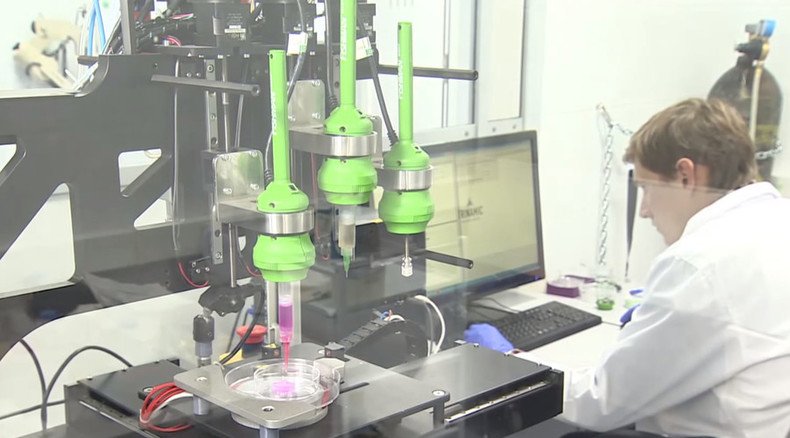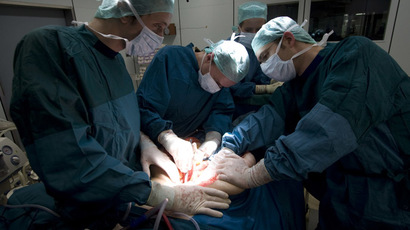Russian 3D-bioprinted thyroid gland implant proves functional in mice

A Moscow laboratory has conducted the first successful organ translation using a unique Russian 3D-printing technology. The breakthrough could potentially help millions suffering from thyroid disorders – and paves the way for printing other human organs.
The thyroid, a butterfly-shaped gland in the neck, can have a dramatic impact on a huge variety of human bodily functions. The groundbreaking operation, thus far only in rodents, was performed by a team from the 3D Bioprinting Solutions Laboratory in the Russian capital some three months ago.
“Then we were monitoring them over eight weeks and the level of the hormone continued growing," said Elena Bulanova, 3D Bioprinting Solutions Laboratory Head.
The thyroid glands in mice were first killed by a radioactive iodine injection, before the research team transplanted newly-printed organs into their subjects.
Three weeks into the experiment, the team, headed by Vladimir Mironov, observed “higher” levels of the hormone T4, which is responsible for growth and the metabolism, and measured higher body temperatures, Bulanova said.
After 11 weeks of monitoring the subjects’ 3D printed thyroid glands, they were fully functional with completely restored thyroid function.
“All in all we consider experiment to be successfully conducted because we managed to raise the level of hormone T4,” Bulanova said.
The 3D-printed organ consists of several types of tissues, and features blood vessels to substitute the thyroid gland of a living organism. The lab’s undertaking to transplant the thyroid first began in March 2015, when the organ was first printed using the Russian bio printer FABION.
In further experiments and in printing other organs, potentially human, researchers are planning to use undifferentiated stem cells taken from an adult organism, which are very similar to embryonary cells.
“There are many new and interesting but complicated tasks which need to be completed, but it is another level of the development of the industry,” said 3D Bioprinting Solutions Executive Director Youssef Hesuani.
The breakthrough of 3D Bioprinting Solutions Laboratory was presented at a scientific conference in the Netherlands earlier this month. During the presentation the head of research, Vladimir Mironov told the scientific community that their 3D-printed organ is able to restore thyroid function in mice suffering from hypothyroidism — a condition where thyroid gland doesn’t produce enough hormones.
Scientists hope that the new breakthrough will one day help millions of people with different thyroid disorders, as the thyroid gland influences almost all of the metabolic processes in human body.













